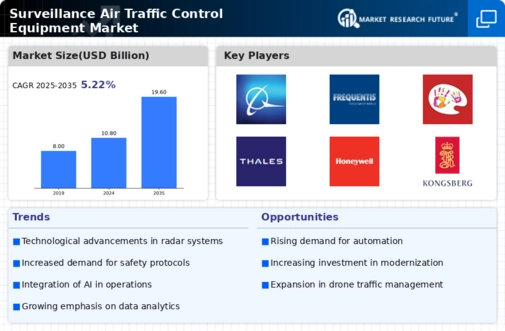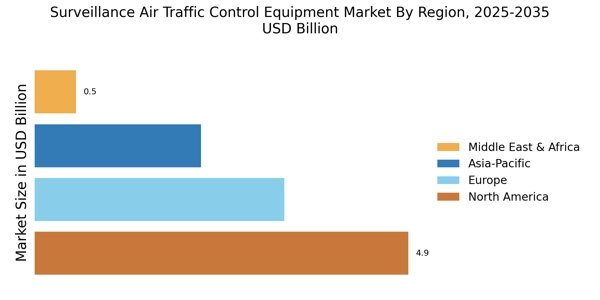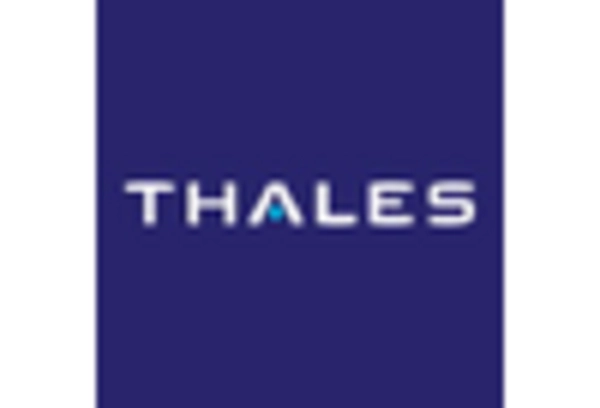Regulatory Compliance and Safety Standards
The Surveillance Air Traffic Control Equipment Market is significantly influenced by stringent regulatory compliance and safety standards imposed by aviation authorities. These regulations necessitate the adoption of advanced surveillance technologies to ensure the safety and security of air travel. For instance, the International Civil Aviation Organization (ICAO) has established guidelines that require member states to implement state-of-the-art surveillance systems. As a result, the demand for high-quality surveillance equipment is expected to rise, with the market projected to reach USD 3 billion by 2027. This trend underscores the critical role of regulatory frameworks in driving market growth.
Increased Investment in Infrastructure Development
The Surveillance Air Traffic Control Equipment Market is benefiting from increased investments in infrastructure development across various regions. Governments and private entities are recognizing the necessity of upgrading existing air traffic control systems to accommodate future demands. This investment trend is particularly evident in emerging markets, where the expansion of airport facilities and air traffic management systems is underway. Reports suggest that infrastructure spending in the aviation sector could exceed USD 100 billion by 2030. Such investments are expected to bolster the demand for advanced surveillance equipment, thereby driving market growth.
Rising Air Traffic and Demand for Efficient Management
The Surveillance Air Traffic Control Equipment Market is witnessing a notable increase in demand due to the rising volume of air traffic. As more airlines expand their operations and new routes are established, the need for efficient air traffic management becomes paramount. Recent statistics indicate that air traffic is expected to grow by 4.5% annually over the next decade. This growth necessitates the deployment of advanced surveillance equipment to manage the increasing complexity of airspace. Consequently, investments in modern surveillance technologies are likely to escalate, further propelling the market forward.
Integration of Artificial Intelligence and Machine Learning
The Surveillance Air Traffic Control Equipment Market is being transformed by the integration of artificial intelligence (AI) and machine learning (ML) technologies. These advancements enable predictive analytics and automated decision-making processes, which enhance the efficiency of air traffic management. AI-driven systems can analyze vast amounts of data in real-time, allowing for proactive measures to be taken in response to potential air traffic issues. This trend is expected to drive significant investments in surveillance equipment, with projections indicating a market growth rate of 6% over the next five years. The incorporation of AI and ML is likely to redefine operational paradigms within the industry.
Technological Innovations in Surveillance Air Traffic Control Equipment
The Surveillance Air Traffic Control Equipment Market is experiencing a surge in technological innovations, which are pivotal in enhancing operational efficiency. Advanced radar systems, satellite-based navigation, and automated tracking technologies are being integrated into air traffic control systems. These innovations not only improve the accuracy of surveillance but also facilitate real-time data sharing among various stakeholders. According to recent data, the market for advanced radar systems is projected to grow at a compound annual growth rate of 5.2% over the next five years. This growth is indicative of the increasing demand for sophisticated surveillance solutions that can handle the complexities of modern air traffic management.


















Leave a Comment